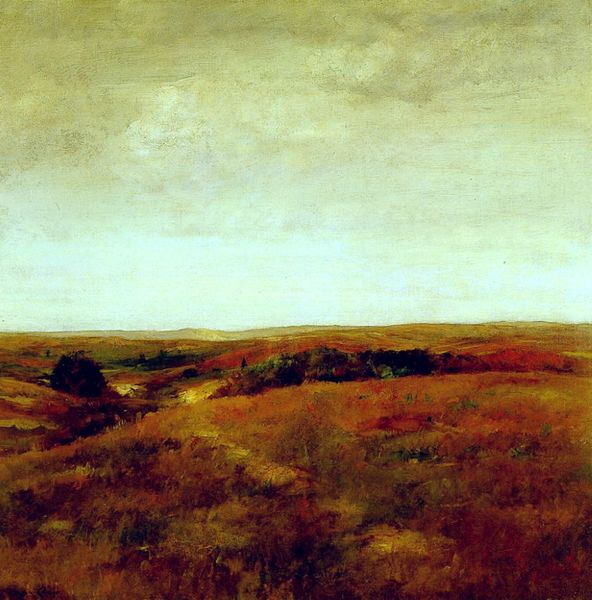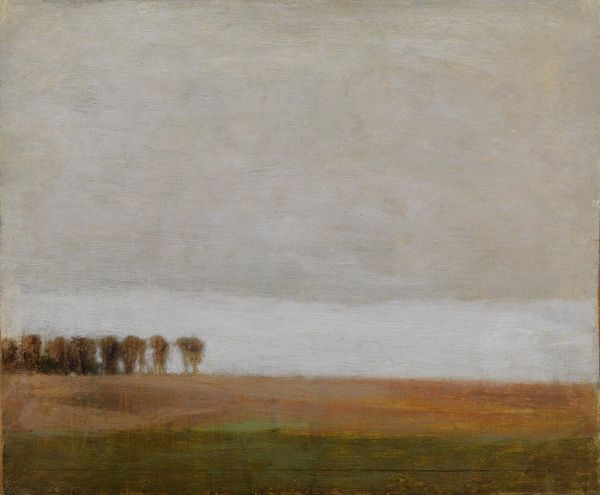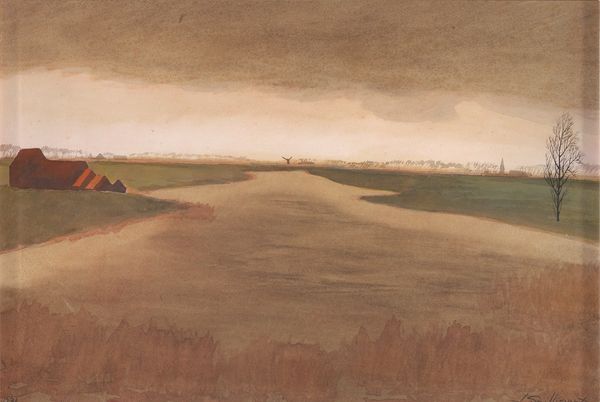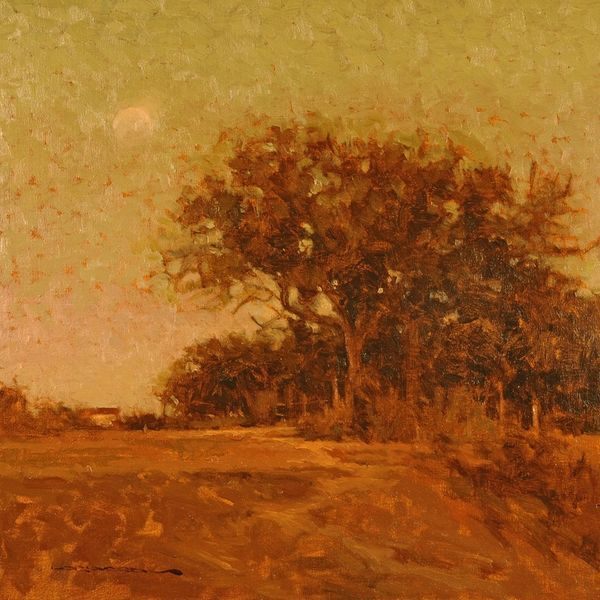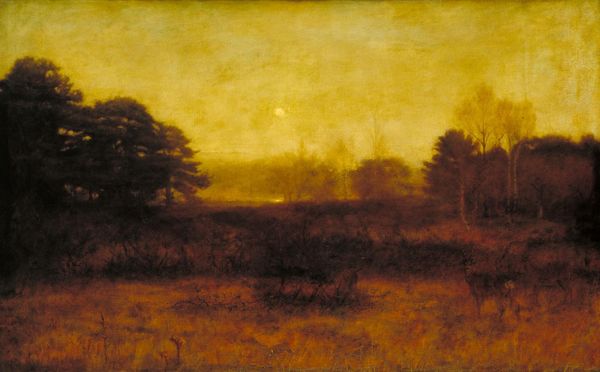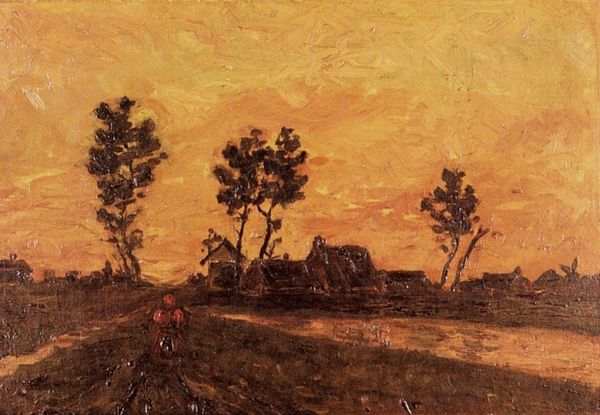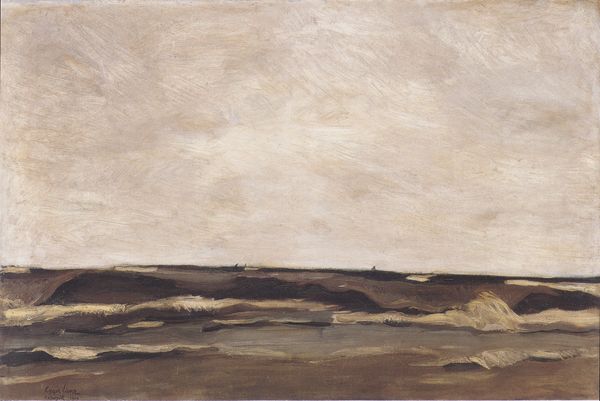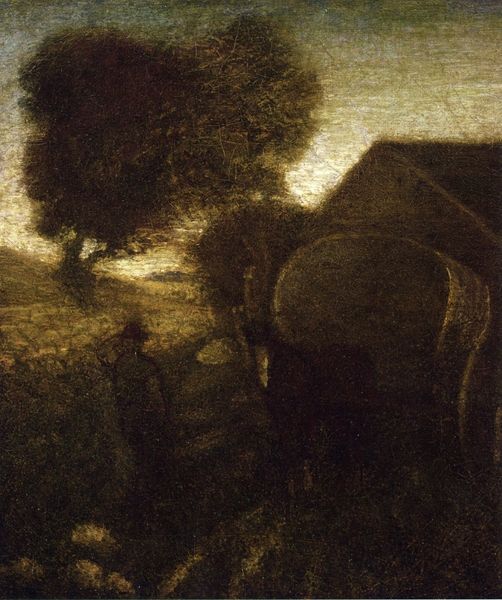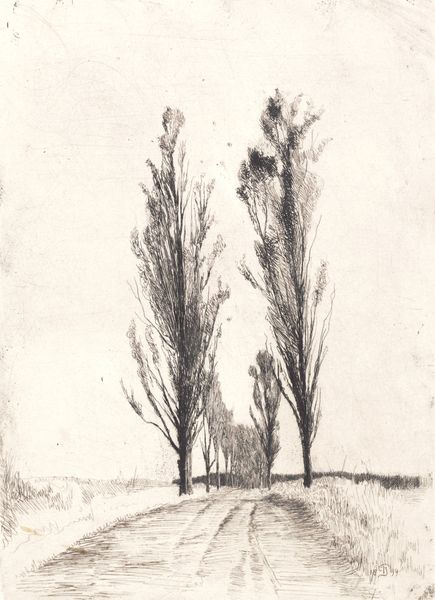
drawing, paper, charcoal
#
drawing
#
sky
#
impressionism
#
landscape
#
charcoal drawing
#
paper
#
charcoal
#
post-impressionism
#
charcoal
#
realism
Copyright: Public domain
Curator: This is Vincent van Gogh's "Landscape in Drenthe," a charcoal drawing on paper created in 1883. It resides in a private collection. Editor: My first impression is how somber and stark it feels. The limited palette of browns and grays really conveys a sense of quiet desolation, even with the suggestion of figures in the landscape. Curator: That somber quality is key. This piece emerges from a period of intense social upheaval in the Netherlands. Van Gogh's turn to landscape as a mode of reflecting on the life and labor of rural communities can be interpreted as a social critique. Editor: Absolutely. The rough strokes of charcoal are not just stylistic; they also speak to the artist’s own laborious process. Look at how the land itself is depicted: etched, almost scarred. It emphasizes the difficulty and the physical labor of working the land. The emphasis isn't on aesthetic pleasure, but on something more real. Curator: Indeed, and the way he utilizes charcoal also deserves consideration. It wasn't the medium of the elites; it's unrefined. Van Gogh’s choosing it over more "high art" mediums sends a clear signal about his artistic priorities. Editor: It democratizes the artistic process, almost making it accessible, right? It removes the pretension and draws focus back onto the working class who likely utilized the land in this image. Curator: Precisely! His stylistic choices serve a deliberate, political purpose, mirroring the gritty realities of life for the Dutch peasantry. The fact that we find a sail boat included in the landscape also tells the audience a story, considering that they relied on the canals to do everyday tasks. Editor: And it’s a beautiful, brutal honesty that is delivered by means of the humble materials, a far cry from oil on canvas! Seeing that house there too also tells a deeper story as to the inhabitants' existence and hard work to just have a humble shelter in the vast fields. This definitely leaves one to consider labor and what it is worth. Curator: It leaves me pondering on the many facets that make the labor valuable and the many purposes in showing what value that really is. Editor: It brings art into conversation with social realities.
Comments
No comments
Be the first to comment and join the conversation on the ultimate creative platform.
